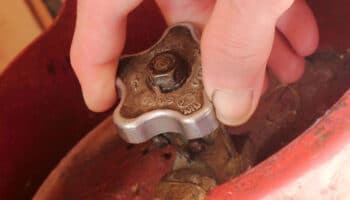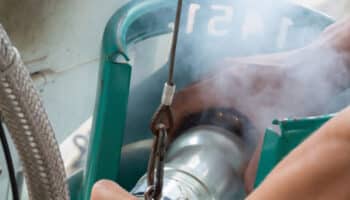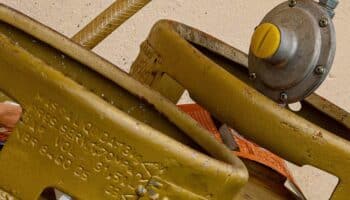Fall can be a beautiful time of year, but with strong winds and leaves flowing everywhere, it’s good to be prepared.
This season is beautiful to look at, and depending on where you live, the weather might be just in the right spot. Not too cold that you’re freezing, yet not warm enough to keep you tossing and turning in bed while trying to sleep at night.
That being said, nothing in life is perfect, and, as great as Fall is, it will throw some challenges your way.
But don’t worry, you came to the right place for answers. Below, I’ve prepared a comprehensive guide with 40 tips to help make this season feel like a breeze. Hopefully, by the end of it, you’ll know everything you need to know to be ready for when the time comes.
Read on to make the best of the Fall!
Tips for Inside Your Home
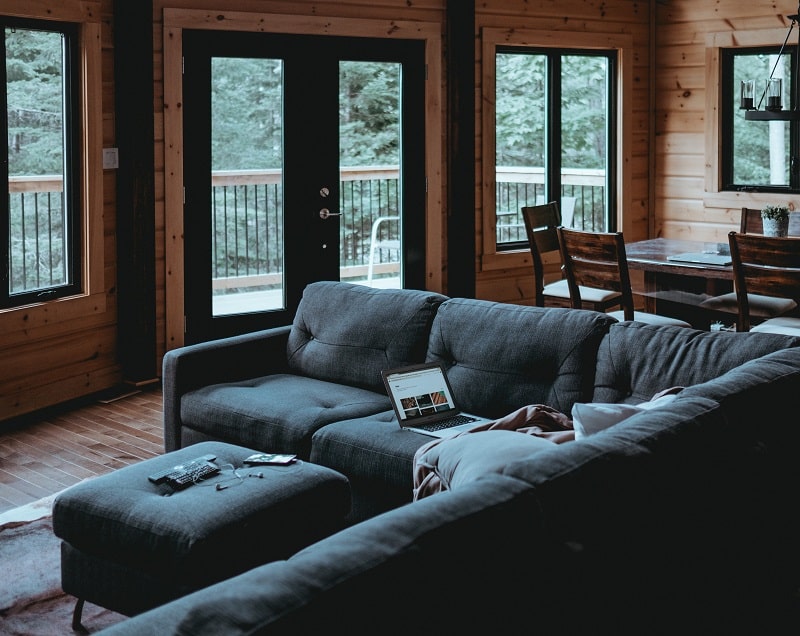
#1 Check for Drafts
Feel for small pockets of airflow that could indicate a draft in your home. If you think you’ve found them anywhere, a good trick to be 100% sure is to take a candle and see if it flickers when you place it there. Seal or replace sealant around windows and doors if required.
Extra heavy curtains or blinds can also help when placed in windows, as they can reduce heat loss by around 10%.
#2 Prep Your Water Heater
Don’t get caught in the cold by an inefficient water heater. Drain the tank and give it a quick cleaning to ensure everything’s in proper working order and the tank system is clean and clear. It’s also very important that you make sure you have the right-sized appliance, as you might be in trouble otherwise.
#3 Test Your Home Heating System
It’s also important to ensure that your heating system is capable and ready. If you find that it’s not performing properly, it’s much better to call a professional now than in the colder months (when everyone else will be calling them too).
Remember, when in doubt, call a pro!
#4 Program Your Thermostat
Make sure you’re only using the energy you need by setting up a programmable thermostat. Set it so the heat starts increasing about half an hour before you get up, and goes down about half an hour before you go to bed (a cooler environment helps for a better, more natural sleep).
#5 Look Into Home Appliance Apps
Never forget to turn off the AC again. Look into hooking up your home systems with a mobile application, this will give you full control over your heating and cooling systems from anywhere.
#6 Inspect Your Gas Furnace
Look for any leaks, and make sure everything is in good working order – especially gas pressure. It should be simple enough, but when it doubt, please hire a professional.
#7 Inspect Your Wood Furnace
Lucky enough to have an authentic fireplace? Just because you’re not using modern fuel, doesn’t mean you shouldn’t also inspect this appliance. Make sure everything’s working with your fireplace and double-check that any smoke coming from it is exhausted properly through the chimney.
#8 Create a ‘Mud-Spot’ by Your Door
Autumn and Winter can mean plenty of muddy and wet boots. Make sure you’ve got a small area, ideally a bench or somewhere to sit, that makes it easy to take off muddy shoes and wet jackets.
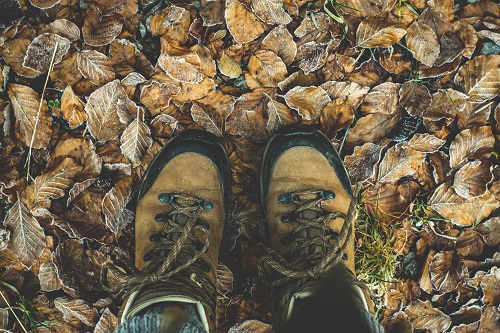
#9 Ice-Cold Floors in the Morning?
A well-placed rug or two can make a world of difference for your feet during cold mornings and nights – without the hassle of switching to a full carpet.
#10 Work From Home?
Think about how heat-efficient your work area is. If you’ll be sitting stationary at your desk, make sure that there are no major heat loss pathways in your surroundings. Or better yet, consider moving to a smaller, cosier part of the house during the winter months. Heating larger areas can cost magnitudes more than a small space!
#11 Store Air Conditioners
For indoor air conditioners, now is a great time to take them down, give them a quick clean/service, and place them in storage for the winter.
#12 Test Smoke and Carbon Monoxide Detectors
This isn’t fall-specific, but it’s always a good idea to make sure you’re regularly checking your safety systems. You never know when you’ll need them.
#13 Clean Humidifiers/Dehumidifiers
Similar to the detectors in #12, it’s always a good idea to make sure any humidifiers or dehumidifiers you’re using are able to operate freely.
#14 Double Check Your Emergency Preparations
This is always an easy task to overlook, but make sure you and your family know what to do in the event of a fire. Double-check your fire extinguishers and blankets, and make sure there’s a clear escape route with minimal fire hazards. Having kids clued in on an escape plan is also worthwhile – not just for safety reasons, but also to get them to consider their surroundings a bit more.
Tips for Your House Exterior
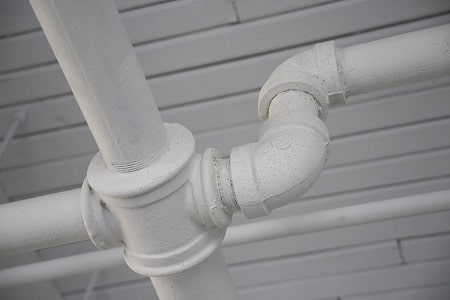
#15 Check Your Roof for Loose Shingles / Leaks / Trapped Debris
While you don’t have to climb up (standing back with a pair of binoculars can also do the trick), getting up close is the best way to get a good look at how your roof is doing. Look for any loose shingles, organise anywhere that leaves and debris have/could collect, and generally look for any major wear and tear.
#16 Clean Your Chimney
It’s always a good idea to do this annually before winter kicks in. Similar to checking your water heater, you don’t want to end up in December with smoke getting trapped in the chimney and finding its way back out into your living room!
#17 Clean Out Your Gutters
Always the picturesque fall task. Even if you’re reading this in preparation for fall, it’s worth getting a quick gutter clean in early to make it less of a hassle when this season really kicks in.
#18 Inspect the House Exterior
Looking for any general pockets of damage or places where air could flow inside your home.
#19 Fortify Your Windows and Doors
You’ll know if you’re in a region that warrants this kind of protection! Sturdy storm doors and windows can make a world of difference if you’re expecting to be up against strong winds and storms.
#20 Prepare Outdoor AC Units
Give any outdoor AC units a quick clean/service and cover them up for the winter. Adjust cooling schedules on any programmable systems accordingly.
#21 Inspect Water/Drain Flows
Ensure your drainages are clear and unobscured to allow for water flow to work as intended. Try to make sure it flows away from any typically manmade construction (concrete/wood).
#22 Wrap Your Pipes!
For any exposed pipes that could be prone to freezing, try wrapping them with heat tape to help insulate them against freezing temperatures.
#23 Clear Out Faucets and Irrigation Systems
Prevent damage from frozen water by draining and covering outdoor faucets and irrigation hoses.
#24 Consider Freeze-Proof Faucets
Ever had to deal with the catastrophe of your water pipe bursting? Freeze-proof outdoor faucets are a great way to fight against this and could save you plenty of hassle if you think you may be at risk.
#25 Patch up Any Damaged Concrete.
Winter is a dangerous time for concrete. If it has any cracks, rainfall can get in and then freeze overnight. Freezing water expands, which puts a lot of pressure on the concrete from the inside. This leads to more and bigger cracks, with the cycle repeating and repeating. It’s worth doing some quick inspections of any driveways and steps that may need a quick patch-up.
Garden & Outdoors Tips
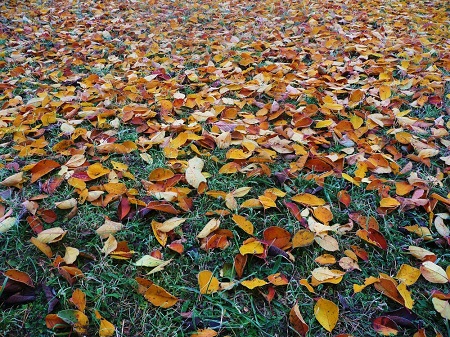
#26 Protect Your Pool
If you’re lucky enough to have a pool in your yard, it’s a good idea to cover it during the colder months (unless you particularly enjoy icy morning swims!). If you don’t know how to service it yourself, consider hiring a professional to help you out.
#27 Prep Your Plants for Winter
Trim back any plant life in accordance with the climate you’re in, to help keep it healthier throughout the fall and winter months.
#28 Plant Spring Bulbs
Fall is the perfect time to get any bulbs planted in order to have them ready for spring.
#29 Clean up Leaves and Debris
If you’re going to have a large amount of leaves to clean up, consider looking into getting a leaf mulcher. Modern models can convert 15 bags worth of leaves into just one bag of the same size.
#30 Stockpile Firewood
If you’ll be using firewood over the coming months, it’s best to get it organised and drying out now if you’re cutting your own wood. Provided you’re buying it elsewhere, get in there before everyone else for better stock deals!
#31 Fertilize Your Lawn
Winter can really tear up the quality of your lawn, so protect it with fertilizer to help keep it healthy throughout the cold months. A great tip, if you have a leaf mulcher, is to simply lay out the mulched leaves as a natural layer of fertilizer.
#32 Create Your Compost Pile
The start of fall is the perfect time to build up a compost heap to use next spring. Not sure how? There are several online resources that can show you how to get started.
#33 Store Garden Furniture
Anything that you won’t be using for the next few months will always fare better in storage. This includes any wooden chairs, patio tables, and even trampolines.
#34 Consider Installing Outdoor Lanterns
If you’ve always been meaning to get some garden lighting sorted, there’s never a better time than now! Modern solar-powered lighting solutions are a fantastically efficient way to make sure family and friends can find their way to your door without issue.
#35 Install Floodlights on Your Garage
Automatic floodlights can also be a great way to give you less to worry about in the darker months. No more fiddling with keys or dropping things in the darkness.
#36 Build a DIY Trash Shed
Building a small shed with a flip-open lid can also make the Fall months easier. This DIY project can hide away up to two 32-gallon containers. Perfect for keeping things tidy, as well as keeping pests and rodents away.
#37 Consider Buying Any Other Helpful Winter Appliances
The right appliance can make a world of difference when it comes to dealing with the colder and darker months. Snow blowers, patio heaters, and propane heaters are fantastic backup heating options in case the power ever goes out.
Garden/Storage Tips
#38 Prepare Any Summer Equipment for Storage
Clear out fuel tanks and do any oil changes on the equipment you won’t be needing over the next few months.
#39 Store Any Summer Vehicles
Park away any ‘big boy toys’ like ATVs or motorbikes before you get stuck trying to do it in harsh December weather.
#40 Organize Your Storage
If all of your winter gear is stuck in the back of your garage, it’s better to spend an hour rearranging everything now rather than fighting with each piece of equipment individually as you need it.
Conclusion
That about covers it!
The Fall is a beautiful season full of bright colors and breathtaking landscapes. However, it can also be the source of a lot of problems and inconveniences.
I hope this piece has helped you better understand the many tips you can implement into your Fall routine to make things easier and get the most out of this great season.
Thank you very much for sticking with me all the way to the end. If this article was interesting and helpful, you’ll be happy to know there are tons of additional resources you can keep learning from below.
I wish you the best of luck!
— Craig.
Conclusion
Whether it was remembering to store away your summer equipment, or just making sure you’re not missing anything important, we hope this quick guide has helped you get your home ready for fall.
The peace of mind that comes with being well-prepared for the weather is invaluable, letting you fully enjoy the changing season – instead of being annoyed by it!
Thanks for reading.
– The Appliance Analysts






